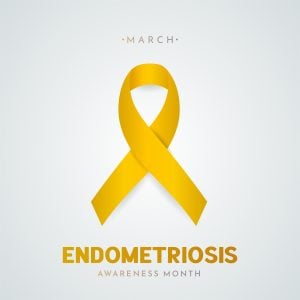 Anorexia nervosa, more commonly known as anorexia, is an eating disorder that involves severe calorie restriction and often a low body weight based on personal weight history. It is a complex condition that has mental, behavioral, and physical symptoms.
Anorexia nervosa, more commonly known as anorexia, is an eating disorder that involves severe calorie restriction and often a low body weight based on personal weight history. It is a complex condition that has mental, behavioral, and physical symptoms.
People who have anorexia often have a strong fear of gaining weight and may think they’re overweight, even if they are not. To prevent gaining weight or to continue to lose weight, people with anorexia often limit the amount or type of food they eat. They do this by restricting the number of calories they consume, resulting in a nutrient deficit and usually, but not always, a very low body weight.
Anorexia can cause changes in the brain due to malnutrition. If left untreated, weight loss can get to a point where people with anorexia are at high risk of serious physical harm or death. Anorexia has the second-highest death rate of any mental illness, surpassed only by opioid overdoses. Most anorexia-related deaths stem from heart conditions and suicide.
There are two subtypes of anorexia nervosa based on eating behaviors:
Restrictive anorexia– the person severely limits the amount and type of food they eat
Binge-purge anorexia– the person greatly restricts the amount and type of food they eat. However, they also have binge-eating and purging episodes where they eat large amounts of food in a short time and then intentionally vomit or use laxatives or diuretics to get rid of what they consumed.
Anorexia involves physical, behavioral, and emotional and mental signs and symptoms.
Emotional and mental signs of anorexia include:
- Intense fear of gaining weight
- Body dysmorphia
- Obsessive interest in food, calories, and dieting
- Fear of certain foods or food groups
- Being very self-critical
- Denying the seriousness of your low body weight and/or food restriction
- Feeling a strong need to be in control
- Insomnia
It is common to have other mental health conditions alongside anorexia, you may have additional mental and emotional symptoms.
Behavioral signs of anorexia include:
- Changes in eating habits or routines, such as eating foods in a certain order or rearranging foods on a plate
- A sudden change in food preferences, such as eliminating certain food types or food groups
- Making frequent comments about feeling “fat” or being overweight despite weight loss
- Purging through intentional vomiting and/or misusing laxatives or diuretics
- Going to the bathroom right after eating
- Misusing diet pills or appetite suppressants
- Compulsive and/or excessive exercising
- Continuing to limit calories even when your weight is love for your sex, height, and age
- Wearing loose clothing and/or wearing layers to hide weight loss and stay warm
- Withdrawing from loved ones and social events
Physical signs and symptoms of anorexia can include:
- Significant weight loss over several weeks or months
- Not maintaining an appropriate body weight based on your height, age, sex, stature, and physical health
- Unexplained change in growth curve or body mass index (BMI) in children and still-growing adolescents
Physical signs and symptoms of anorexia that are side effects of starvation and malnutrition include:
- Dizziness and/or fainting
- Fatigue
- Abnormal heart rhythm
- Low blood pressure
- Feeling cold all the time
- Absent periods or irregular menstrual periods
- Bloating and/or abdominal pain
- Muscle weakness and loss of muscle mass
- Dry skin, brittle nails, and/or thinning hair
- Poor wound healing and frequent illness
Anorexia is a complex condition with no singular cause. Research suggests that a combination of certain factors may be responsible, such as:
- Genetics
- Brain changes
- Trauma
- Environment and culture
- Peer pressure
- Emotional health
Anorexia nervosa affects all gender identities, races, ages, incomes, and body types. It is also more common among teenagers, although people of any age can develop anorexia. Teens can be more at risk due to all of the changes their bodies go through during puberty. They also face peer pressure and can be more sensitive to criticism or casual comments about weight or body shape. Certain factors can raise the risk of anorexia and other eating disorders, including:
- Family history
- A history of weight bullying
- A history of dieting
- Transitions
A healthcare provider can diagnose anorexia nervosa based on the criteria listed in the Diagnostic and Statistical Manual of Mental Disorders (DSM-5). The three criteria include:
- Restriction of calorie consumption that leads to weight loss or a failure to gain weight. This results in a significantly low body weight based on your age, sex, height, and stage of growth.
- Intense fear of gaining weight or becoming fat
- Having a distorted view of yourself and the seriousness of the state of your health
If you have signs and symptoms of anorexia, a healthcare provider will do a complete medical history and physical exam. They will ask questions about your:
- Dietary history
- Exercise history
- Psychological history
- Body image
- Purging frequency and elimination habits (use of pills, laxatives, and diuretics)
- Family history of eating disorders
Treatment for anorexia varies depending on the person’s needs. They may receive treatment through inpatient or outpatient care based on their current medical and mental state. Treatment for anorexia most often involves a combination of:
- Individual and group psychotherapy
- Medication
- Hospitalization
A person with anorexia or any eating disorder will have the best recovery outcome if they receive an early diagnosis. If you or someone you know are experiencing signs and symptoms of anorexia, be sure to talk to a provider as soon as possible.
To find out more about our mental health services or to schedule a virtual appointment, call (718) 670-5316 to speak with our intake coordinator or call (718) 670-5562 to reach the clinic.
All content of this newsletter is intended for general information purposes only and is not intended or implied to be a substitute for professional medical advice, diagnosis or treatment. Please consult a medical professional before adopting any of the suggestions on this page. You must never disregard professional medical advice or delay seeking medical treatment based upon any content of this newsletter. PROMPTLY CONSULT YOUR PHYSICIAN OR CALL 911 IF YOU BELIEVE YOU HAVE A MEDICAL EMERGENCY.
 In May 2023, former U.S. Surgeon General Dr. Vivek Murthy issued a report that drew attention to an epidemic that affects half of American adults: loneliness and social isolation.
In May 2023, former U.S. Surgeon General Dr. Vivek Murthy issued a report that drew attention to an epidemic that affects half of American adults: loneliness and social isolation.









